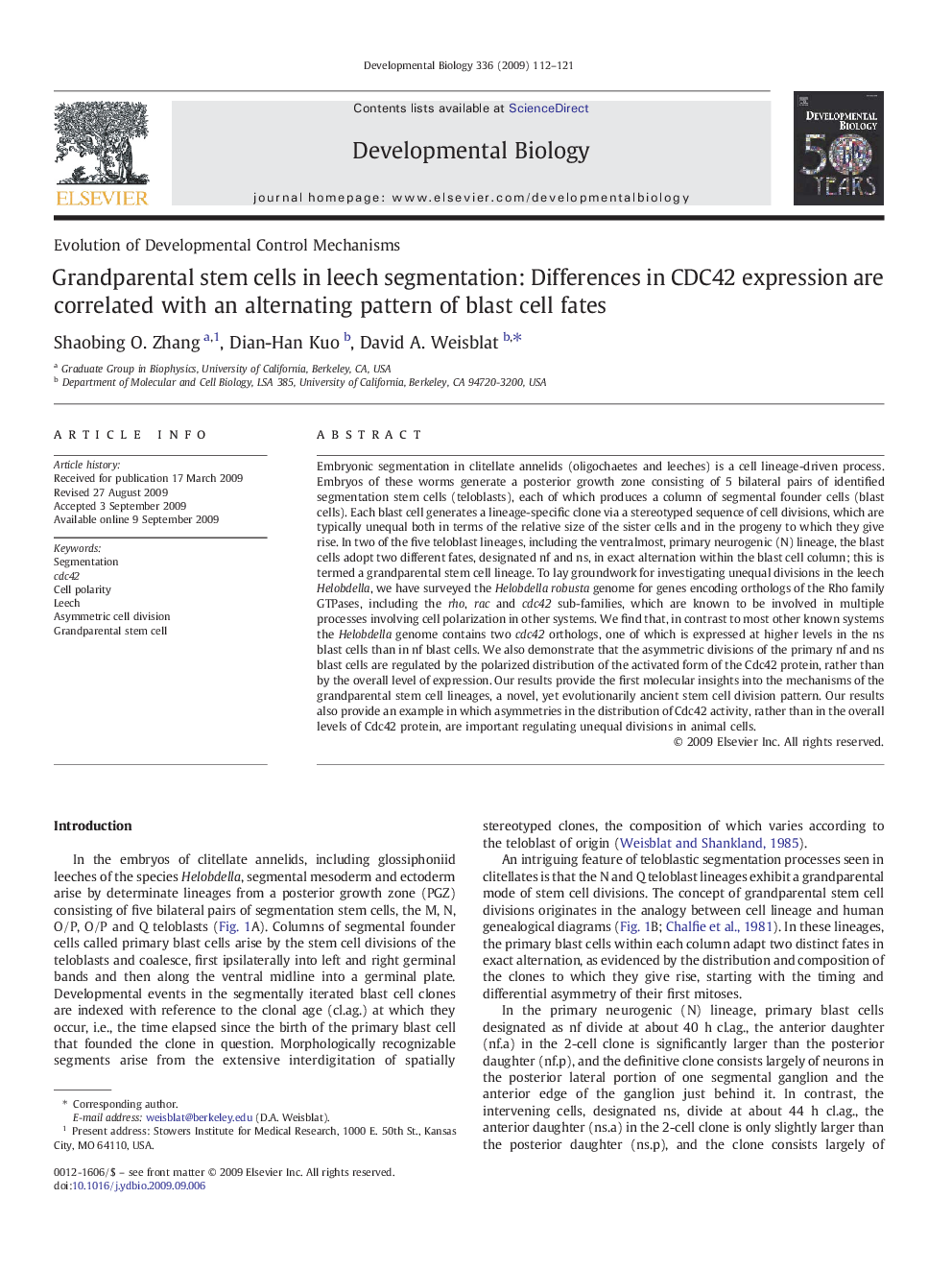| Article ID | Journal | Published Year | Pages | File Type |
|---|---|---|---|---|
| 10933184 | Developmental Biology | 2009 | 10 Pages |
Abstract
Embryonic segmentation in clitellate annelids (oligochaetes and leeches) is a cell lineage-driven process. Embryos of these worms generate a posterior growth zone consisting of 5 bilateral pairs of identified segmentation stem cells (teloblasts), each of which produces a column of segmental founder cells (blast cells). Each blast cell generates a lineage-specific clone via a stereotyped sequence of cell divisions, which are typically unequal both in terms of the relative size of the sister cells and in the progeny to which they give rise. In two of the five teloblast lineages, including the ventralmost, primary neurogenic (N) lineage, the blast cells adopt two different fates, designated nf and ns, in exact alternation within the blast cell column; this is termed a grandparental stem cell lineage. To lay groundwork for investigating unequal divisions in the leech Helobdella, we have surveyed the Helobdella robusta genome for genes encoding orthologs of the Rho family GTPases, including the rho, rac and cdc42 sub-families, which are known to be involved in multiple processes involving cell polarization in other systems. We find that, in contrast to most other known systems the Helobdella genome contains two cdc42 orthologs, one of which is expressed at higher levels in the ns blast cells than in nf blast cells. We also demonstrate that the asymmetric divisions of the primary nf and ns blast cells are regulated by the polarized distribution of the activated form of the Cdc42 protein, rather than by the overall level of expression. Our results provide the first molecular insights into the mechanisms of the grandparental stem cell lineages, a novel, yet evolutionarily ancient stem cell division pattern. Our results also provide an example in which asymmetries in the distribution of Cdc42 activity, rather than in the overall levels of Cdc42 protein, are important regulating unequal divisions in animal cells.
Related Topics
Life Sciences
Biochemistry, Genetics and Molecular Biology
Cell Biology
Authors
Shaobing O. Zhang, Dian-Han Kuo, David A. Weisblat,
